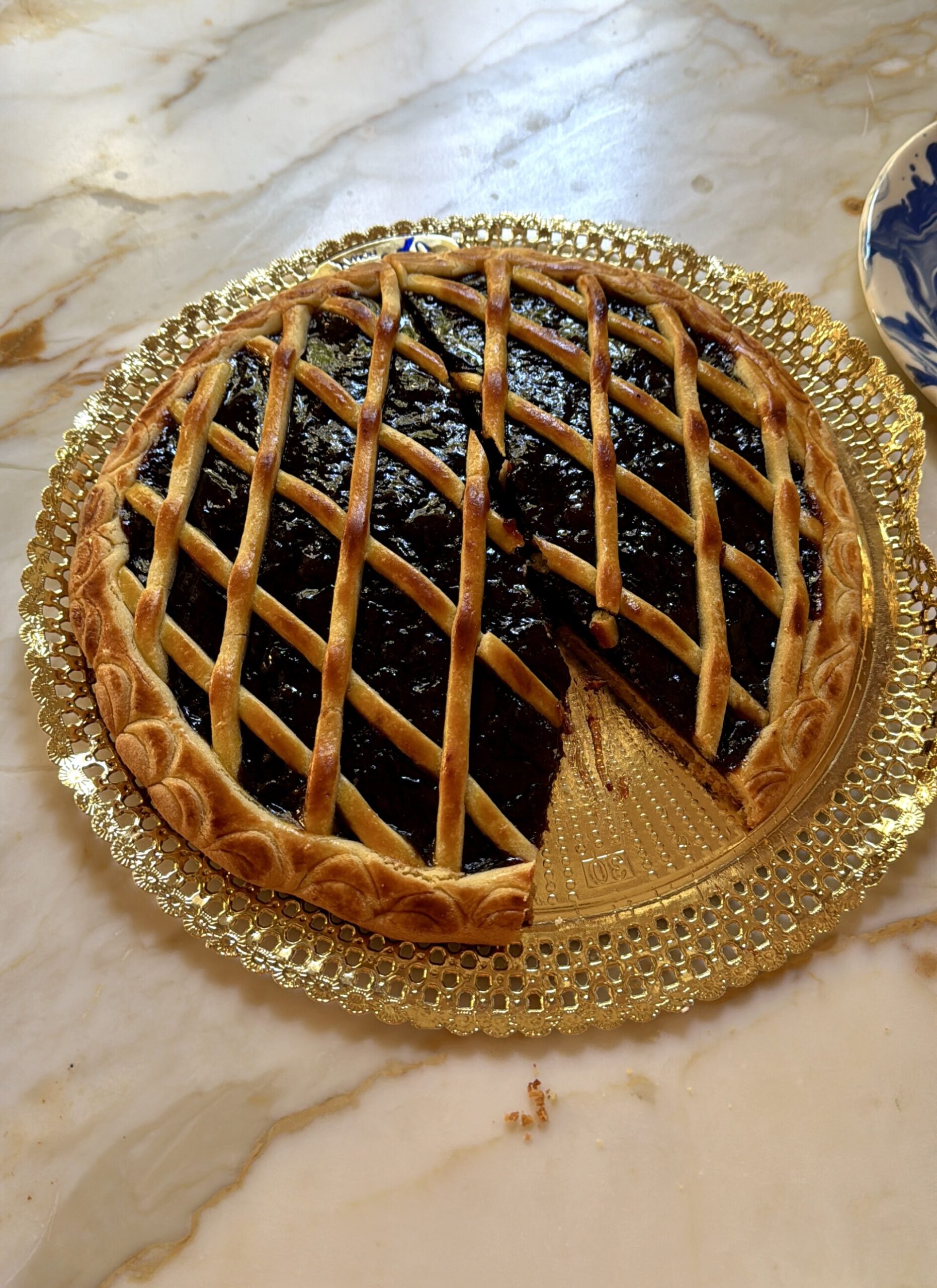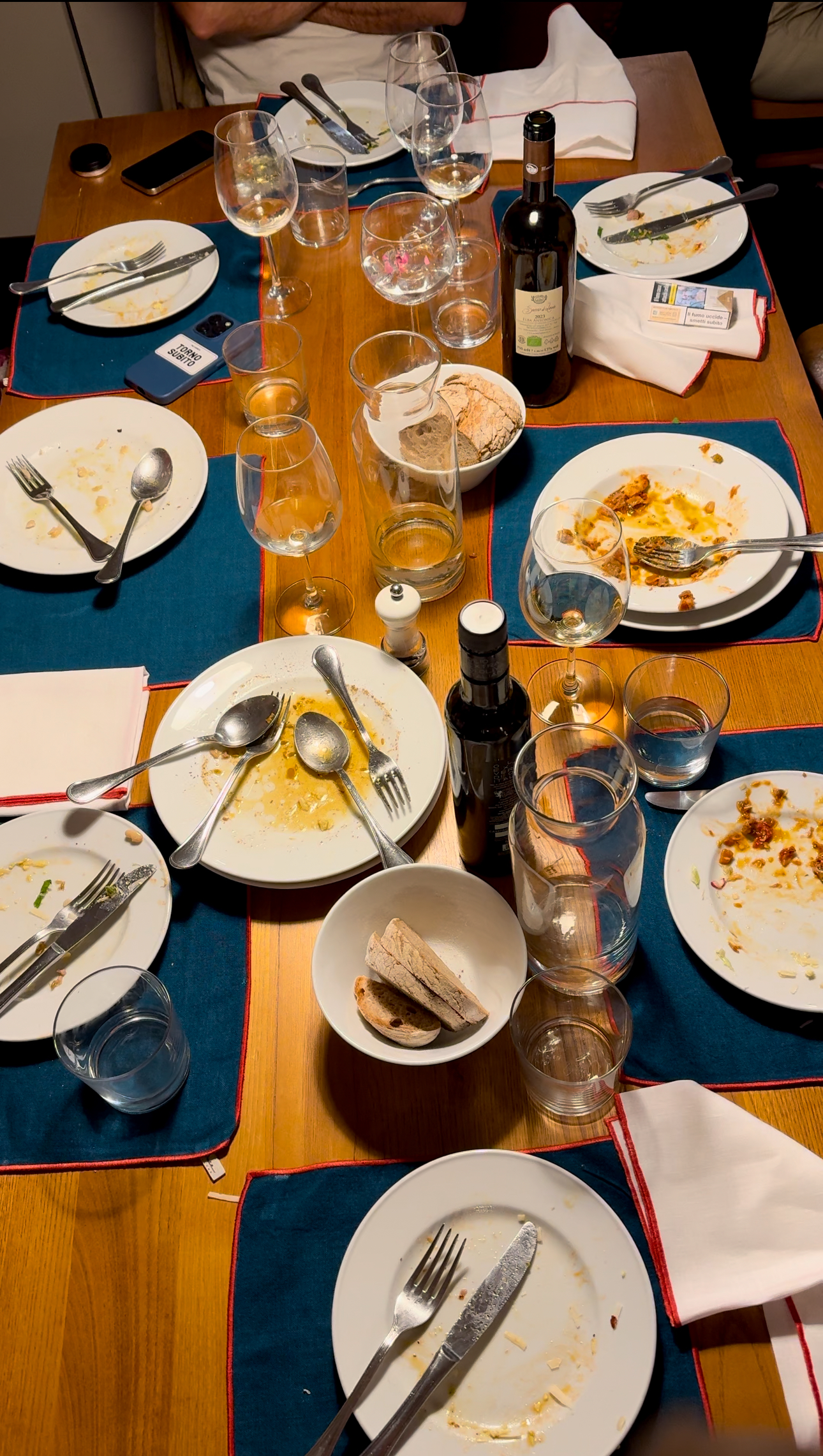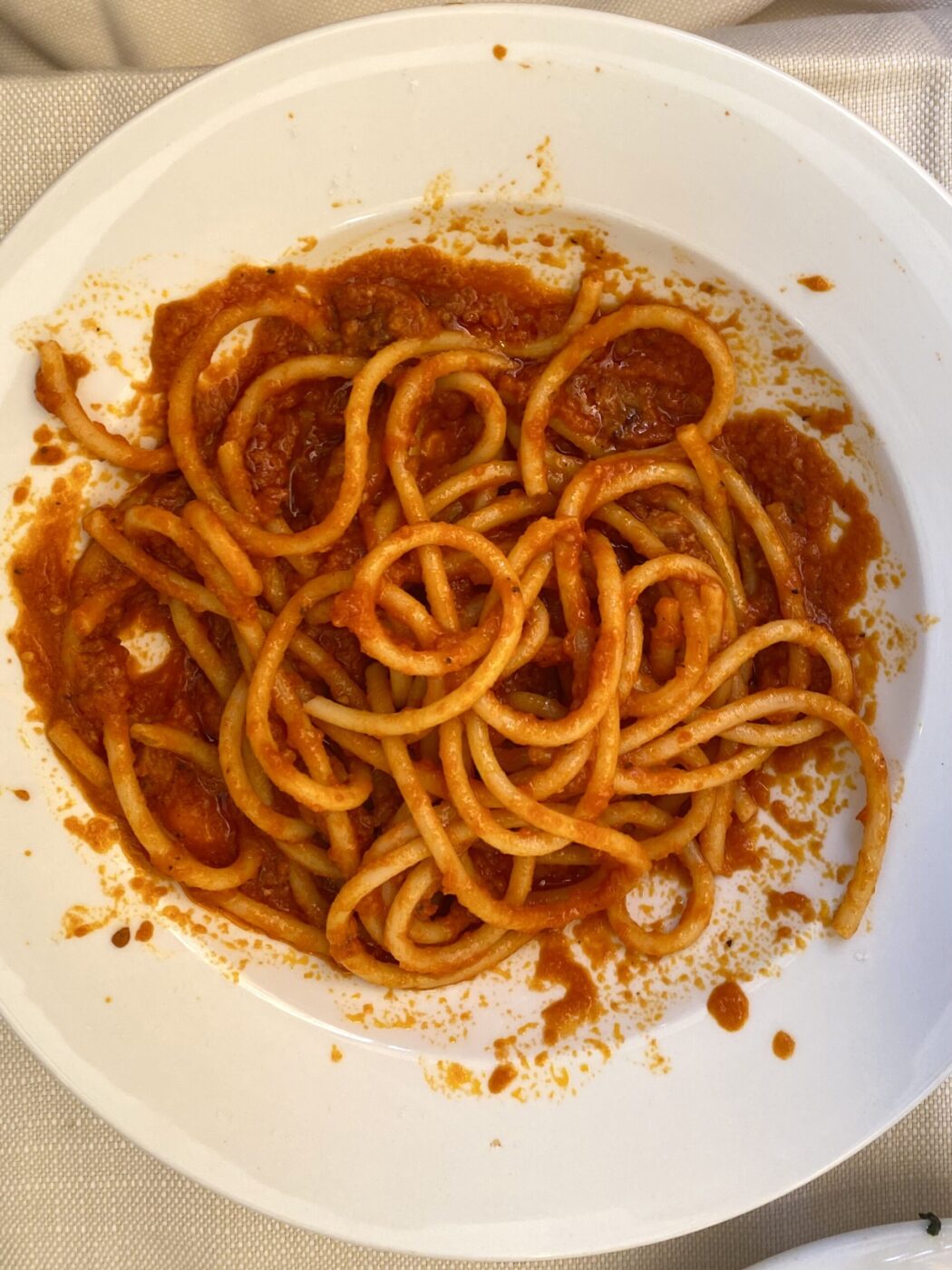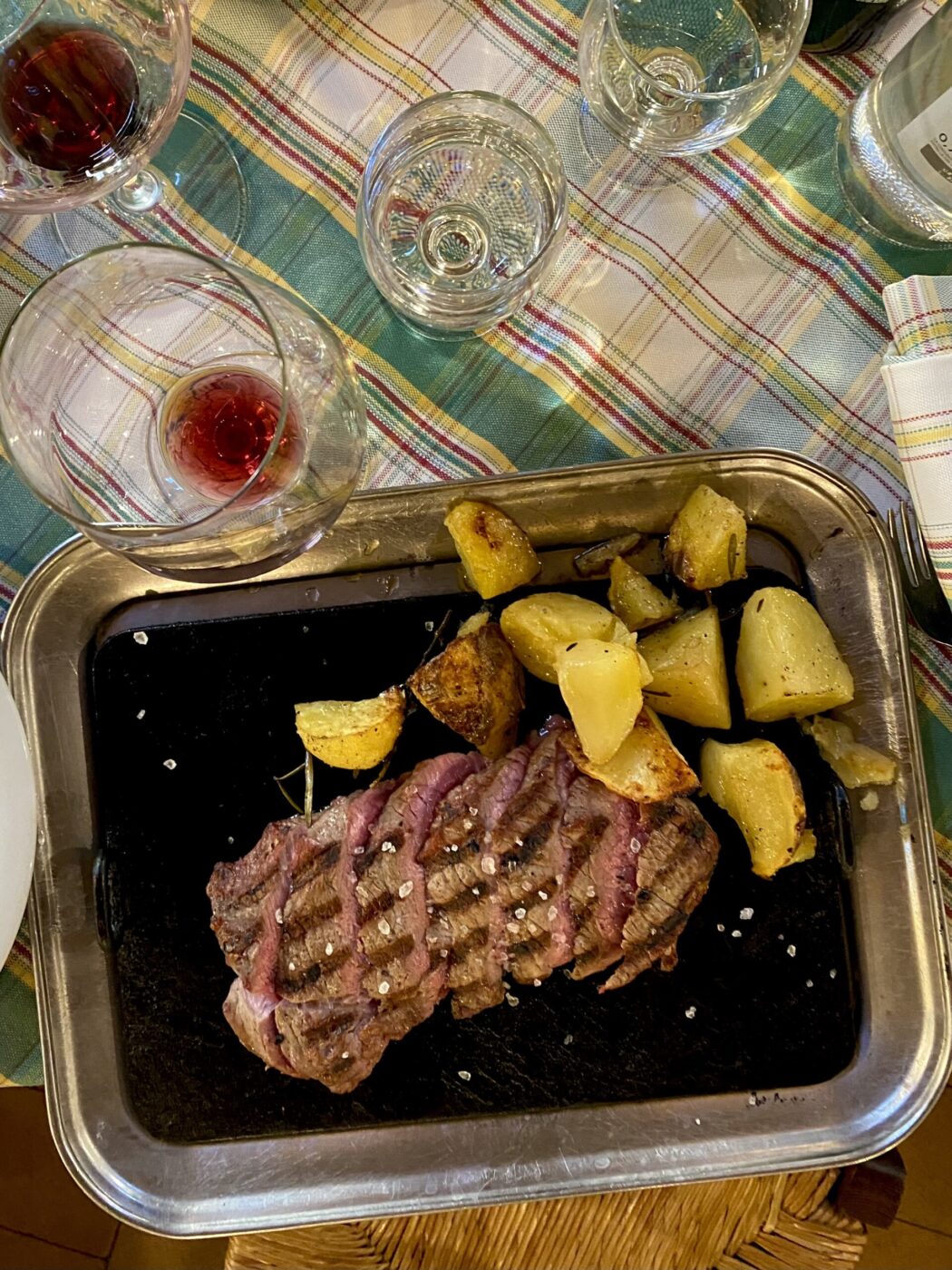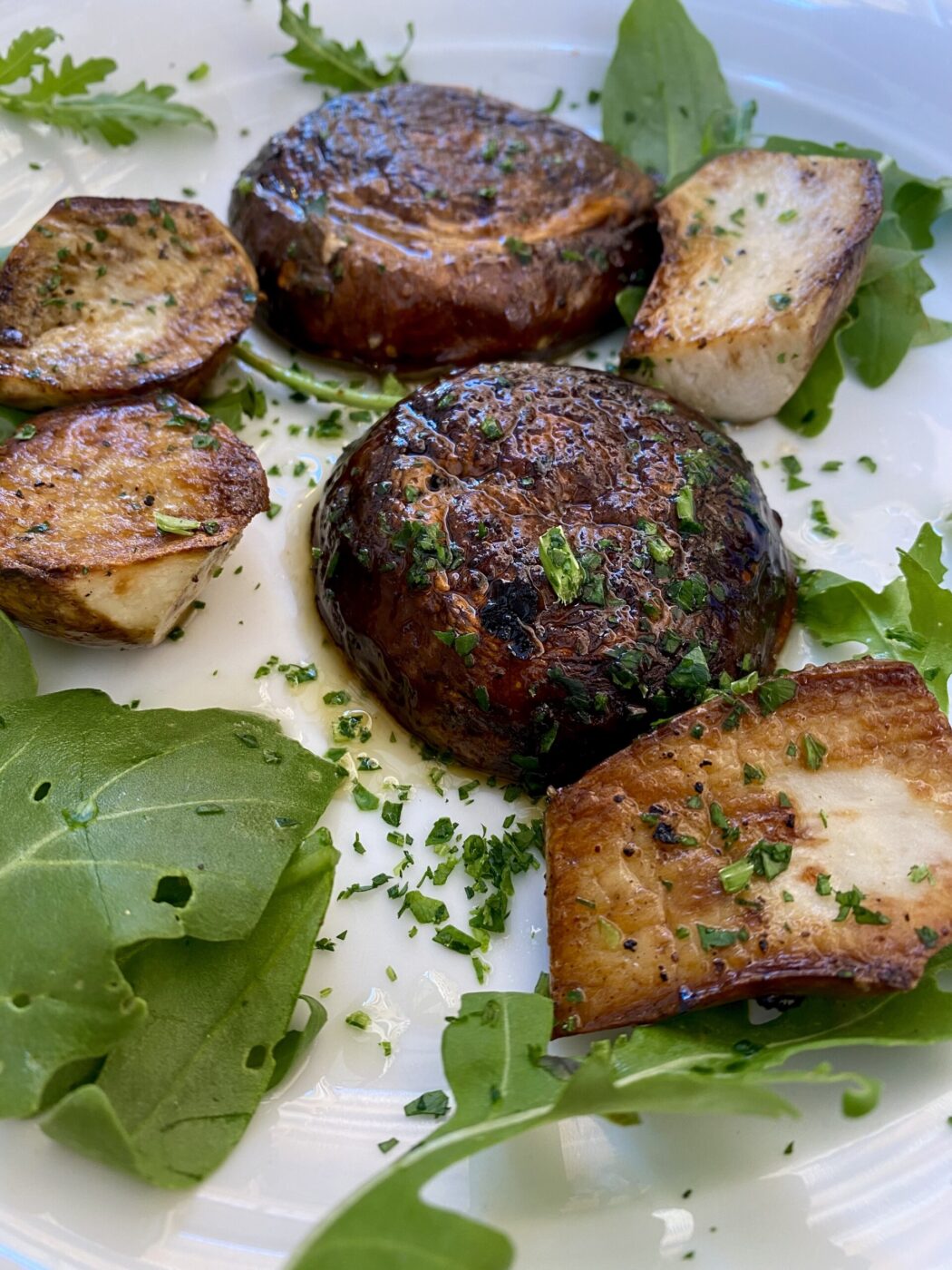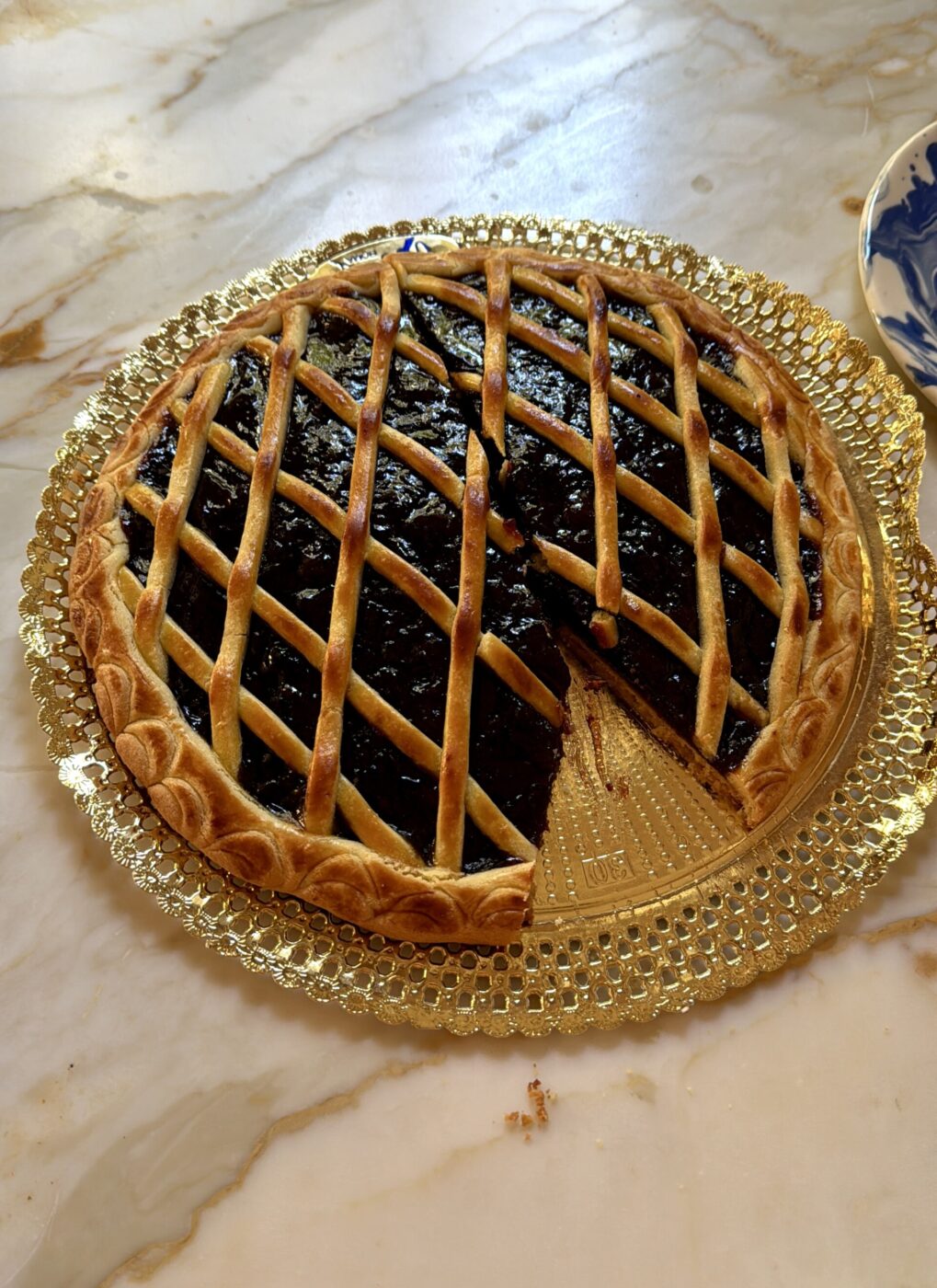If you’re reading this, you likely know that we take our food very, very seriously at Italy Segreta. It’s not uncommon to find us dissecting plates ingredient by ingredient and arguing about the best way to cook an artichoke, or which restaurant makes the best version of any said food. Every member of our team is ride or die about some dish or another, and has very particular opinions on how it should be made–Betty, her potatoes (strictly roasted with rosemary) and Marina, her cherry crostata (with visciole NOT amarene)–and so, here, we give ourselves the space to wax poetic about some of our absolute favorites; each course courtesy of a different member of the Italy Segreta Team.
Antipasto: Vitello Tonnato
Valentina Calò, Operation & Business Development Manager
Even I was surprised by my response, when the Italy Segreta Editors asked, “What dish do you always order, no matter what, when you see it on the menu?” I didn’t hesitate: vitello tonnato.
Even though it’s a typical dish from Piedmont, I often come across it with great pleasure in various restaurants across different Italian regions, and it’s rarely something I can overlook when I do. In my opinion, when a restaurant offers the dish, it’s because they’re confident that the final result delivers.
The veal, poached or braised, must be tender and sliced thinly, and topped with a sauce made from tuna, egg yolks, a generous spoonful of capers, the juice of one lemon, anchovies, half a glass of olive oil, and a spoonful of vinegar, blended together until creamy and tangy. Vitello tonnato is served chilled or at room temperature and makes the perfect antipasto (though I think it makes an equally delightful main course).
I’ll keep ordering it whenever I find it on the menu, and I recommend it to anyone who, like me, loves simple yet never boring things. When in Florence, you absolutely must try the version at Bar Bar.
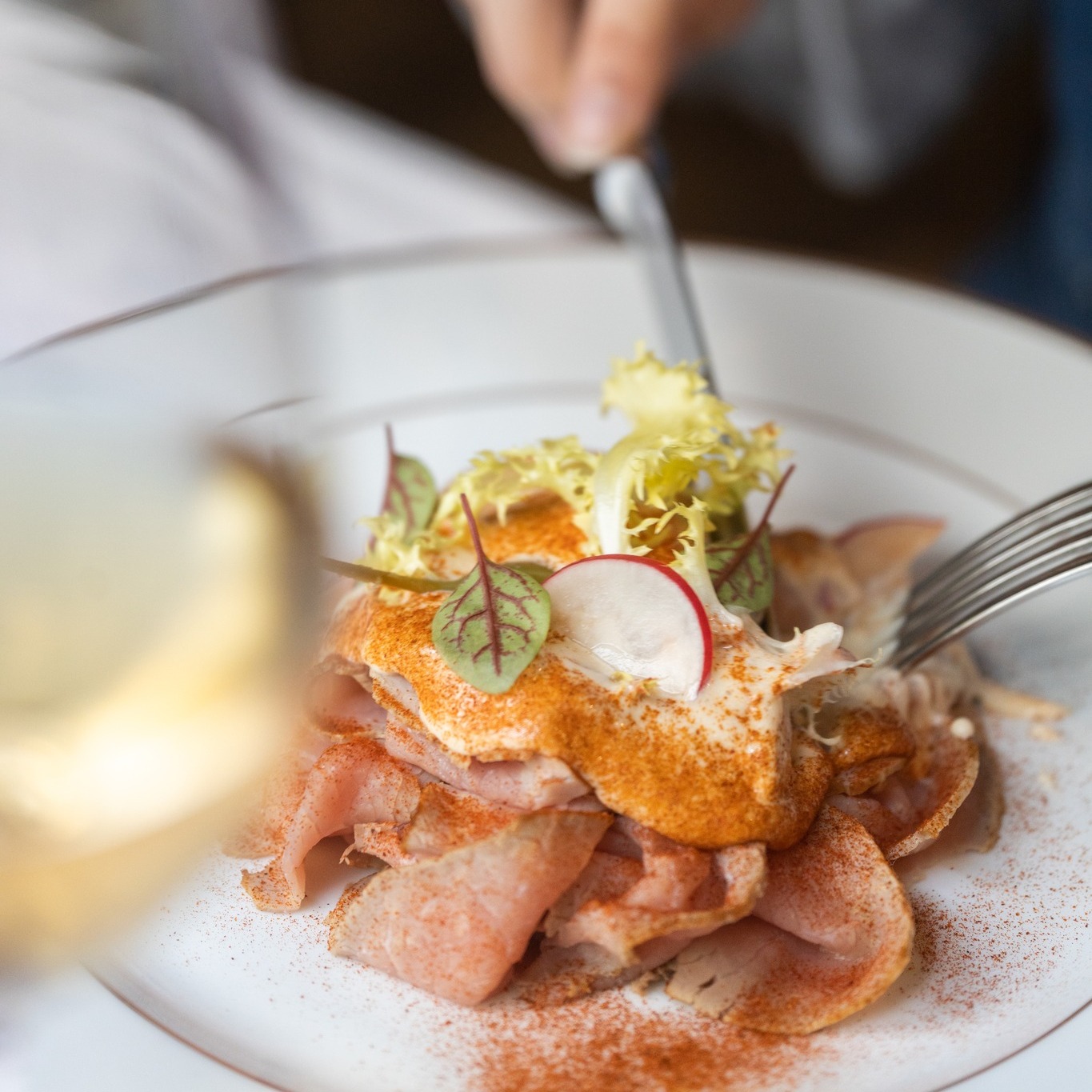
Courtesy @giacomo_milano
Primo: Bucatini all’Amatriciana
Anna Hirschorn, Senior Editor
I’m a die-hard primo enthusiast. I can’t get enough of tortellini in brodo come winter, autumn means zucca (pumpkin) stuffed tortelli in butter and sage and porcini on tagliolini, and summer isn’t the same without fresh pasta al pomodoro and plates on plates of spaghetti alle vongole. But the primo that I truly never get sick of–and can eat year-round–is amatriciana. One of Rome’s canonic pastas, sugo all’amatriciana is made with tomatoes, guanciale, and Pecorino Romano, making it the only-tomato based pasta in its family, as well as arguably the lightest. As much as I love all the Roman pastas, the lactose intolerance I refuse to acknowledge makes my relationship with carbonara, cacio e pepe, and gricia complicated. Amatriciana, however, is descended from the latter, which came from shepherds in Grisciano and consists solely of guanciale and pecorino. When the nearby town of Amatrice was burned by the Spanish in 1592, survivors fled to Naples, where tomatoes–a fruit once thought to be poisonous–had become popular among the working class for their affordability and versatility. A century later, as Amatrice was rebuilt, its residents began incorporating tomatoes into their gricia, influenced by the culinary trends of their southern neighbors.
Many now add a pinch of red chili flakes to theirs, but I swear by dicing and adding fresh, red peperoncini for a bit of kick (at restaurants, I always ask for it to be made piccante). As for the most contentious part, the pasta shape, I opt for bucatini, which, for what it’s worth, is the most “traditional” one. But my Roman colleagues are willing to fight to the death Gladiator-style for rigatoni. I say you try both and decide for yourself.
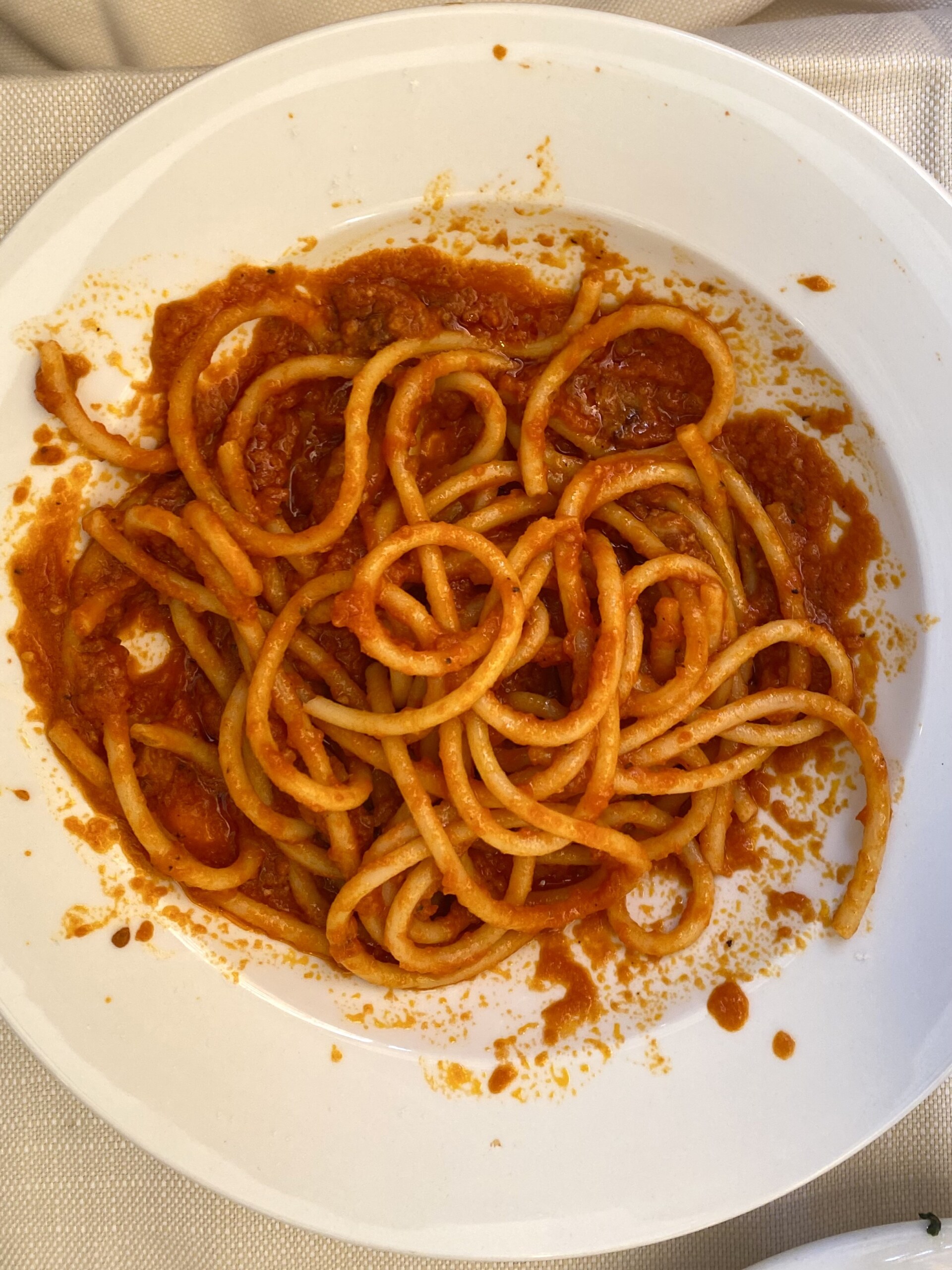
Secondo: Bistecca di Manzo alla Brace e Patate al Forno (Grilled Steak with Oven-Roasted Potatoes)
Betty Subrizi, Graphic Designer
For me, mouthwatering perfection is a thinly-sliced bistecca di manzo alla brace (grilled steak), accompanied by crispy patate al forno (roasted potatoes).
The ideal steak should have a maximum thickness of 3 cm and be well-marbled, with a frame of fat surrounding the meat and fine streaks of fat within. It should be perfectly seared on the outside and rare on the inside. The potatoes (if you think they’re just a simple side dish, you’d be making a grave mistake) should be chopped roughly into small pieces, very crispy on the outside, almost “charred,” but soft and sweet on the inside. They’re roasted with a drizzle of oil, rosemary, a bit of garlic, and the secret ingredient: wild fennel.
Now we arrive at the perfect bite: a piece of meat, a piece of fat, and a roasted potato. For me, this is the true “meal of the gods.” And I’m not alone—my best friend Enrica wholeheartedly agrees. At Dal Toscano in Rome, they have perhaps the best “steak” I’ve ever eaten–you should order two. They’re thin, and so delicious that when you finish the first, you’ll immediately want the second. As for the roasted potatoes, unfortunately for you, the best are served at my house, but if you’re in Florence, stop by Le Mossacce; theirs are truly exceptional.
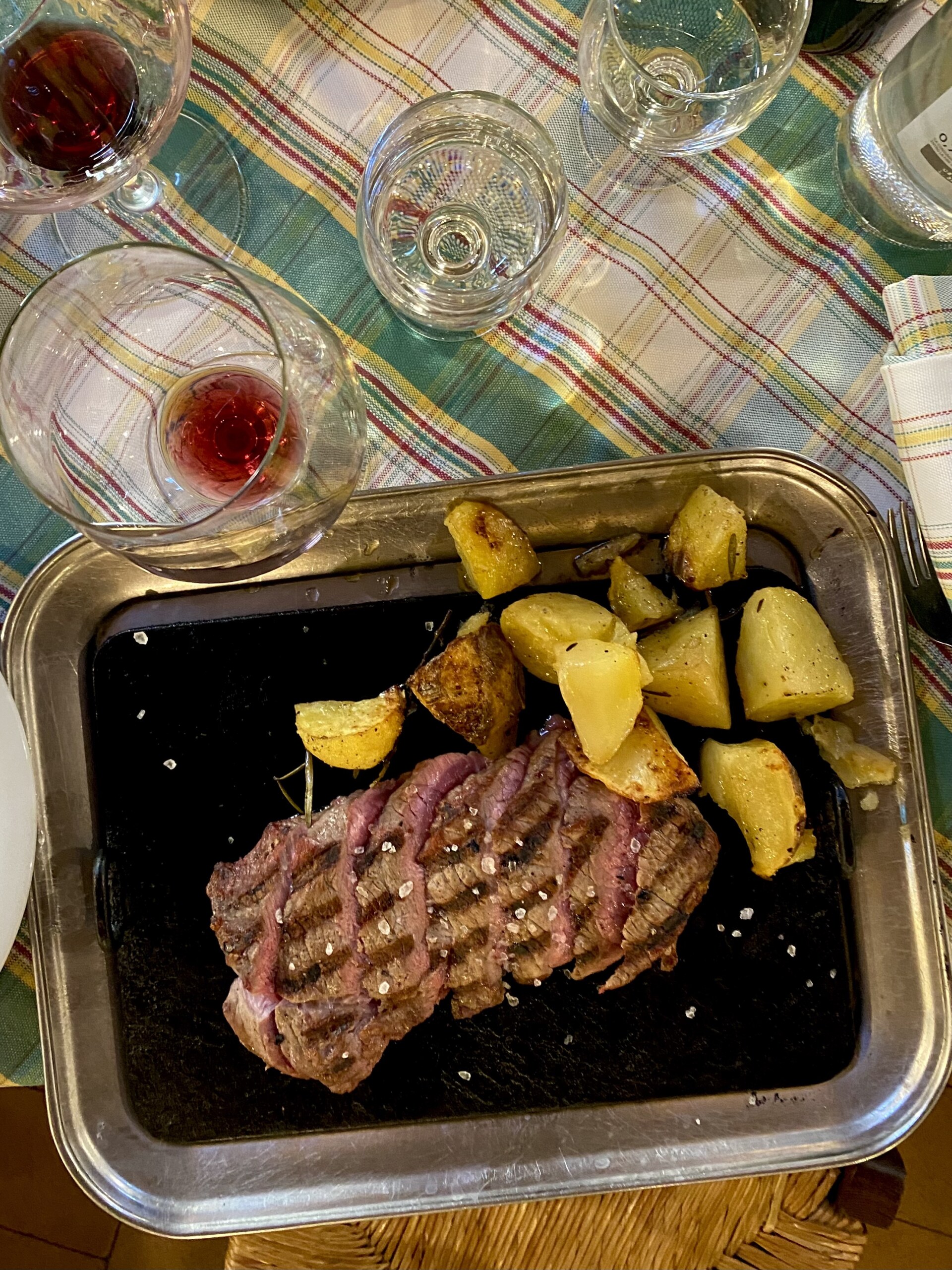
Contorno: Grilled Porcini
Nancy Butler, Junior Editor
Though I might have preferred going on about my favorite primo, it’s a finite truth that the humble contorno shouldn’t be overlooked. For starters, they are some of the rare occurrences when you can actually eat vegetables in this country, and second, when paired intentionally–as passionately described by Betty above–they serve to enhance and define your meal, rather than just accompany it. I certainly don’t disagree with ordering roasted potatoes, but there’s always room for more than one contorno at the table–sharing is caring, people! Although anything that stars carciofi (artichokes) holds a close second place, the one contorno I will always order is Italy’s autumnal offering: porcini.
If mushrooms were rare precious stones, then porcini would undoubtedly be diamonds. Like truffles and morels, porcini are almost exclusively foraged for in the wild, and they grow in symbiosis with the roots of trees in forests across Italy. With brown caps and thick (thick!) white stalks, some grow up to a third of a meter in height. In culinary terms, porcini are tender, meaty, earthy, buttery, heavenly.
Order them grilled. At the best Italian restaurants, they’ll be priced by the kilo, and you’ll get to choose your porcini before it’s cooked, as if it was a rare Chianina steak. They’ll arrive at your table slightly charred, drizzled with a bit of olive oil, and finished with salt. They pair well with everything; I’ve even gilded the lily and ordered them alongside tagliatelle con porcini and fried porcini. In some Italian regions, there’s also a short growing period from March to April–make friends with your local market vendors or restaurateurs to get the 411 on when they’re available.
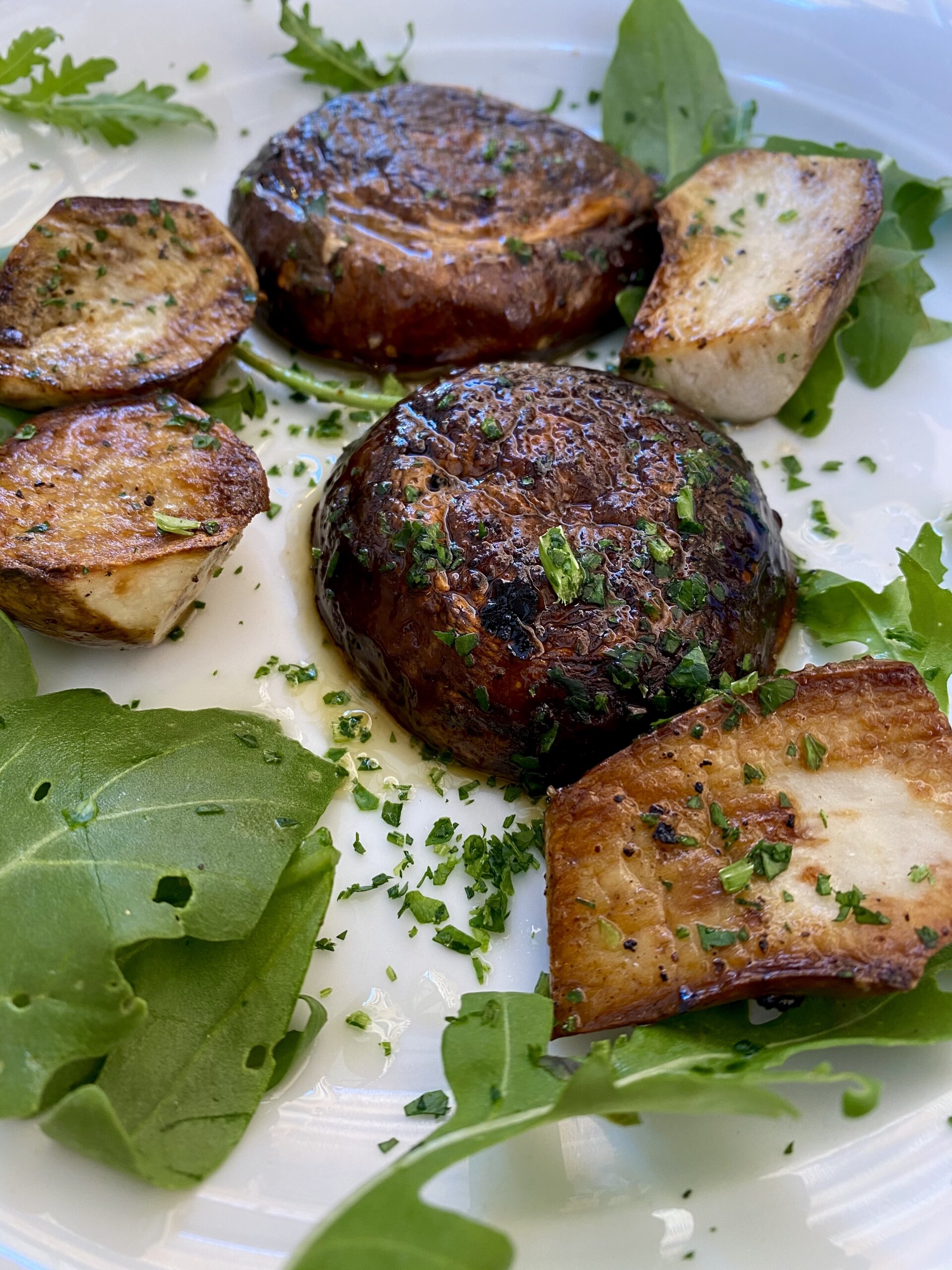
Dolce: Crostata di Visciole (Sour Cherry Tart)
Marina Cacciapuoti, Editor-in-Chief & Creative Director
I’m not usually one for sweets, but, when it comes to crostata alla visciole, I’m a bottomless pit. The combination of a perfectly dense, not-too-buttery, absolutely not granulosa (and don’t even think about confusing it with shortbread) pasta frolla and the tangy, not-too-sweet visciola jam is a match made in heaven. As we know, the simplest things are the best, but also the hardest to master. Let’s start with the pasta frolla, one of the fundamental preparations in Italian dolci. For this, we have the French to thank–specifically chef Guillaume Tirel, who invented pasta frolla in the 1300s (or at least, he was the first to write the recipe down). Now, I’m no baker, but I can tell a great pasta frolla from an average one. When it’s great, the edges of my crostata are the first to go–something that has led to animated fights with my husband, who always ends up with a crustless deformed piece (if any at all).
Dulcis in fundo, the jam must be made with visciole (also known as ciliegio acido)–don’t confuse them with amarene. Visciole are smaller, brighter red on the outside, and with lighter-colored and firmer flesh than typical cherries. The only translation is “sour cherries,” but honestly, I haven’t found anything quite like them anywhere else in the world, and when mixed with sugar… CIAO. All of this is to say that the combination of the two is an explosion of tanginess, acidity, and sweetness—umami, or at least my version of it.
My best friend knows me well, and when visiting from Rome never comes empty handed–and it isn’t wine or candles she’s bringing but a crostata di visciole from Pasticceria Regoli. When I get the chance, I also treat myself to one at Mercato Albinelli in Modena or order it as dessert at Al Moro in Rome (not always available and usually the first thing to go–as it gets prenotata even before people put in their meal order). I’d be lying if I told you “I promise I’ll save you a piece”–so please just order it next time you come across it e mi raccomando VISCIOLE non amarene.
